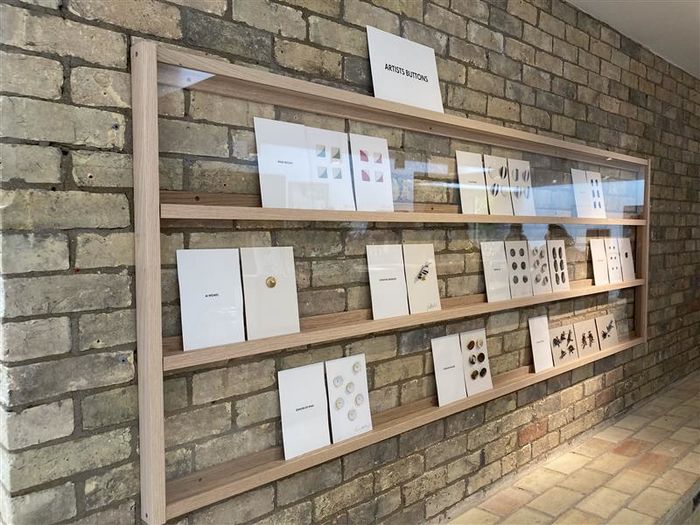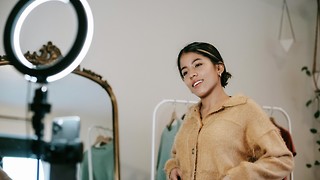How Jim Ede and the Kettle’s Yard Artists shaped author Laura Freeman’s way of life too
The Times chief art critic explores how writing her book Ways of Life: Jim Ede and the Kettle’s Yard Artists altered her own way of life

“Sorry, it’s a fifteen minute wait.” Stuck outside Michaelhouse, waiting for it to transform from Church to cafe as it does each Sunday, we are both firmly reminded of the dual identity of place - the capability of a room to be many different things to many different people. As we prepare to meet Laura Freeman, author of Ways of Life: Jim Ede and the Kettle’s Yard Artists, such a realisation seems rather fitting. After all, Kettle’s Yard was not just a gallery: it was a home. And art to Jim Ede was more than just art, but a ‘way of life’ too.
Having spent the last few years researching Kettle’s Yard’s founder, Jim Ede, for her biography, Laura’s subject matter appears to have transformed her own ‘way of life’ too. With the “eight lever arch folders” and the roughly 72 page timeline she has collected on Jim, she has become strangely acquainted with this man she has never met in the flesh. So deeply acquainted in fact that in the height of lockdown madness, she even accidentally slipped into calling her very own husband “Jim.” Good thing we were conducting this interview, and not Freud.
“To a certain extent, the author is always going to shape the way a portrait comes across”
In this act of intertwining, she tells us that it was important for her to abide by Richard Cohen’s idea of following “in the footsteps of your subject.” While Ede is most well-known for his legacy at Kettle’s Yard, his last great act of creation, the curator led a full, travel-filled life before he settled down in Cambridge. With trips everywhere from Cambridge and Hampstead, to Tangier and America, Laura insists that tracing him in this way “really does make an incredible difference.” For someone like Jim “for whom houses are so unbelievably important,” connecting him to the material spaces he inhabited became important too.
This Ede as artist, curator, and avant-garde interior designer, is important to the very shape of the book, each chapter beginning with a piece of artwork from Kettle’s Yard. In the biography, Laura talks of how Jim wrestled with the form his own book would take. However, she quickly reassures us she never faced the same struggle, as it was only natural for the book to reflect the careful curation of objects around the house: “I knew I wanted to have an object from Kettle’s Yard at the head of every chapter, because it’s such a visual place.” This structure reflects Jim’s talent for seamlessly integrating artworks, furniture, and objects to create a living work of art.
“Jim says, ‘between you, you transform my life,’ and I think we’ve all had a friend who you meet and they kind of do that for you.”
Opening the book with a photo Kettle’s Yard pebbles and a description of Jim himself as one of these “imperfect” stones, Laura transforms Jim into a character, and an artwork, treating the subject like a close friend. Having immersed herself so deeply in his life and research, the book interweaving art and life together, we wondered if she was weary of inserting herself or her perceptions of Jim into the narrative. As Laura points out, “it’s always a delicate balance.” Fittingly returning to the world of art, she draws an analogy to portraiture - “think about Napoleon, the number of portraits that are made of him all by different artists, they’re all so slightly different. It’s the same man. To a certain extent, the author is always going to shape the way a portrait comes across.”
However, we were curious how Laura had discovered the tools to paint Jim in the first place. From what images was she copying this man? The book pieces together over 80 interviews with Jim’s friends, family and students who studied at Cambridge. Referencing an interview with Jim’s 96-year-old daughter, Laura explains that “she was brilliant and candid in a way that you know only a daughter can be.” Chatting with the people who shaped his life, Laura became intimately familiar with Jim: “practically, I could tell you what Jim was doing on any day of the week in any year.” But the book isn’t just a biography of Jim Ede, and Jim isn’t the only character whose story Laura shares. It is a meticulously curated account of the artists that surrounded him - Barbara Hepworth, David Jones, Henry Moore and Ben Nicholson amongst others. “I think they were totally essential to his life. I think they shaped his way of looking at the world.” She tells us about his archive in the attic that made up a large bulk of her research, explaining how she sifted through Jim’s correspondence with close friends: “There’s an amazing letter that Jim writes to Ben Nicholson when Winifred Nicholson died,” she continues, “Jim says, ‘between you, you transform my life,’ and I think we’ve all had a friend who you meet and they kind of do that for you.
“He taught me a greater appreciation for small moments of beauty”
Jim’s ability to transform lives seems to have transcended beyond his close and personal friends. The book opens with a semi-fictional account of an undergraduate visiting Kettle’s Yard for the first time. The passage describes how Jim encouraged students to borrow pieces from his collection to decorate their walls – a testament to his belief in the transformative power of art, not just as decoration, but as a source of conversation, contemplation, and shared experience. His belief in the democratisation of art has left a lasting impact on Kettle’s Yard, if not the walls of many undergraduate student rooms to this day. Laura admires that Kettle’s Yard is not as “hostile” as so many galleries - “I love the fact there is no pinecone on a chair. You can always sit down,” or as one student did, “do your dissertation at the table upstairs.”
Laura emphasises Jim’s belief that “art really is for everyone.” She describes him as a “brilliant talker about art,” demystifying the art world through accessible language: ’’you read his lecture, there is no jargon, there’s not one technical term”. As an art historian and critic herself, Laura explains that “one of my major bug-bears is you go to galleries and there are exhibition captions that are incomprehensible. I mean I find them incomprehensible - I did a bloody degree in this. I do this for a living!”
As our hot chocolates empty and our interview draws to a close, Laura tells us about the profound impact that writing the book has had on her own life. She admires how for Jim, works of art could be found all around us – a feather, a pebble, a seedhead. Laura explains that this philosophy has changed her approach to interior design, telling us of the seedheads and tractor rings she displays on her windowsill, joking that she likes “to pretend they are like Richard Poussette’s brass rings at Kettle’s Yard.” However, on a deeper level she is acutely aware of the idea that “you can’t write a biography without them invading you.” While alive, Jim imbued his way of life into the lives of many others - from teaching a science student to see microscope slides as a painting, to gifting a feather to a depressed student with the message that like the ruffled feather her life too could be smoothed. And yet even in death, in the legacy of Kettle’s Yard and the stories of those who knew him, Jim’s ‘way of life’ has continued to shape people. Having spent so much time with Jim’s ghost, Laura tells us how writing biography “does change you.” From seedheads to light (“light afternoons”, “sun setting in the west”, “low light slanting in a room creating prisms”), Laura feels that Jim has taught her a “greater appreciation for small moments of beauty” - a sentiment that maybe we can all learn from Jim and bring into our own ways of life too.
 News / Union elections kick off with contested presidential race22 November 2025
News / Union elections kick off with contested presidential race22 November 2025 News / Queens’ for Palestine stages second sit-in23 November 2025
News / Queens’ for Palestine stages second sit-in23 November 2025 News / English students fury at note sheet ban for exams21 November 2025
News / English students fury at note sheet ban for exams21 November 2025 News / Protesters call on university staff to support strike action21 November 2025
News / Protesters call on university staff to support strike action21 November 2025 Comment / Confidence isn’t earned, it’s bought 21 November 2025
Comment / Confidence isn’t earned, it’s bought 21 November 2025










